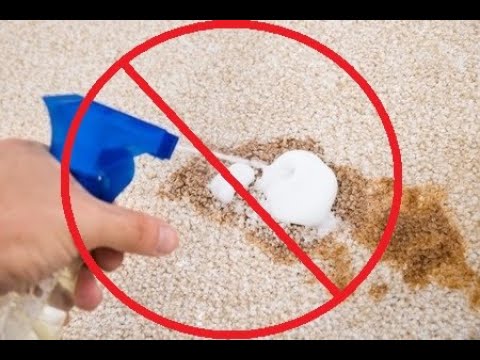
Spot cleaning a carpet effectively can prevent a small spill from becoming a permanent stain. The key is to act quickly and use the right technique. Here’s a general guide to the best way to spot clean a carpet, with some common DIY solutions.
TRY AT YOUR OWN RISK
The Golden Rules of Spot Cleaning
Act Fast: The sooner you address a spill, the better your chances of removing it completely. A fresh spill is much easier to clean than a dried, set-in stain.
Blot, Don’t Rub: Rubbing a stain can fray the carpet fibers and push the stain deeper into the padding, making it harder to remove. Always blot the stain gently with a clean, microfiber towel, if you have one, or a white cloth or paper towel, working from the outside of the stain toward the center to prevent it from spreading.
Use White Cloths: Always use a clean, white, absorbent cloth or paper towel. Colored cloths can transfer dye to your carpet, creating a new, unwanted stain.
Test a Hidden Area: Before applying any cleaning solution to the stain, test it on a small, inconspicuous spot of your carpet (like inside a closet) to ensure it doesn’t cause discoloration or damage. TRY NOT TO USE A SOAPY OR FOAMY CLEANER.
Don’t Over-Wet: Avoid saturating the carpet with a cleaning solution, as this can lead to mold and mildew underneath the carpet.
TRY AT YOUR OWN RISK
The General Method
Remove Excess Solids/Liquids: If the spill is a solid, like food or mud, use a dull knife or spoon to scrape up as much of the material as possible. For liquids, blot the area with a dry, clean, microfiber white towel to absorb as much of the spill as you can.
Apply a minimal about of cleaner: Based on the type of stain, choose an appropriate cleaning solution (see options below). Apply the solution to a clean cloth and then blot the stain. Do not pour the solution directly onto the carpet unless specified.
Let it Sit: Allow the solution to sit on the stain for a few minutes to allow it to break down the stain.
Blot and Rinse: Blot the stain again with a clean, damp cloth to lift the stain and remove the cleaning solution. Repeat this process as needed, changing to a clean section of the cloth or a new one as it becomes saturated.
Dry the Area: Once the stain is gone, place a dry, clean towel over the spot and weigh it down with a heavy object (like a stack of books). This helps to absorb any remaining moisture and prevents the stain from wicking back up to the surface as it dries. Let it dry completely.
TRY AT YOUR OWN RISK
Common DIY Cleaning Solutions
Many common household items can be effective spot cleaners, BUT ALWAYS TRY PLAIN WATER FIRST! Always follow the general method above, regardless of the solution you choose.
For most general stains (food, juice, soda): A solution of warm water mixed with a small amount of clear, liquid dish soap is often effective.
For tough stains and odors (pet accidents, wine):
Vinegar and Baking Soda: After blotting the spill, sprinkle a generous amount of baking soda over the stain. In a spray bottle, mix equal parts white vinegar and water. Spray the vinegar solution onto the baking soda until it fizzes. Let it sit for an hour or so, and then vacuum up the dried mixture. This method works well for neutralizing odors.
For red wine and coffee:
Hydrogen Peroxide and Dish Soap: Mix one part hydrogen peroxide (3%) with a half part of clear dish soap. Apply the solution to a cloth and blot the stain. This is best for light-colored carpets, as hydrogen peroxide can have a bleaching effect.
For greasy stains (butter, oil):
Baking Soda: Sprinkle baking soda on the stain to absorb the grease. Let it sit for a few minutes before vacuuming it up. Repeat as necessary.
If a stain persists after trying these methods, it may be time to call a professional carpet cleaner.
